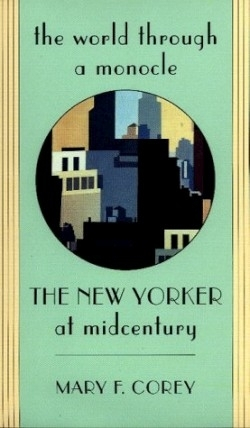The World Through a Monocle
The New Yorker at Midcentury
This is a study of how The New Yorker magazine influenced and was influenced by its readership in the postwar years. It should appeal to the same genteel intellectual crowd that avidly perused (and still peruses) the magazine itself from after World War II to the end of the 1950s. Independent bookstore owners, take note: this is the same audience that is likely to keep their local bookshop going because their way of thinking of the world and themselves is unlike the mindset catered to by mass-market weeklies.
Corey, a lecturer in history at the University of California, Los Angeles, analyzes the content including stories, poems, cartoons and articles—of The New Yorker as a measure of the aspirations, if not material realities, of its audience. She uses that content to tell a history of the social milieu that allowed The New Yorker to flourish. Using the content of the magazine, Corey expounds on the postwar liberal intelligentsia’s views on the major issues that preoccupied them: the atom bomb, McCarthyism and Communism, race relations and ethnicity, household help, relations between men and women, and alcohol.
The World Through a Monocle is a rare, relatively cheerful history of the twentieth century, as it concentrates on one of the most prosperous periods of the wealthiest nation at the time. Although it examines a world of “unprecedented prosperity,” the book also uncovers the subtext lurking just beneath the rarefied world depicted in the magazine to show the injustices toward non-whites and less privileged classes endemic to that society.
Those who love New York history, urban history, or social science will find The World Through a Monocle as enchanting as many do the magazine itself. Be warned, though, it’s a serious history—heavy on the footnotes in the back—not light reading. Though Corey’s work is far more readable than a standard doctoral dissertation, it still has a strong academic orientation. But, then again, The New Yorker readers love to be challenged.
Reviewed by
Celeste Sollod
Disclosure: This article is not an endorsement, but a review. The publisher of this book provided free copies of the book to have their book reviewed by a professional reviewer. No fee was paid by the publisher for this review. Foreword Reviews only recommends books that we love. Foreword Magazine, Inc. is disclosing this in accordance with the Federal Trade Commission’s 16 CFR, Part 255.

